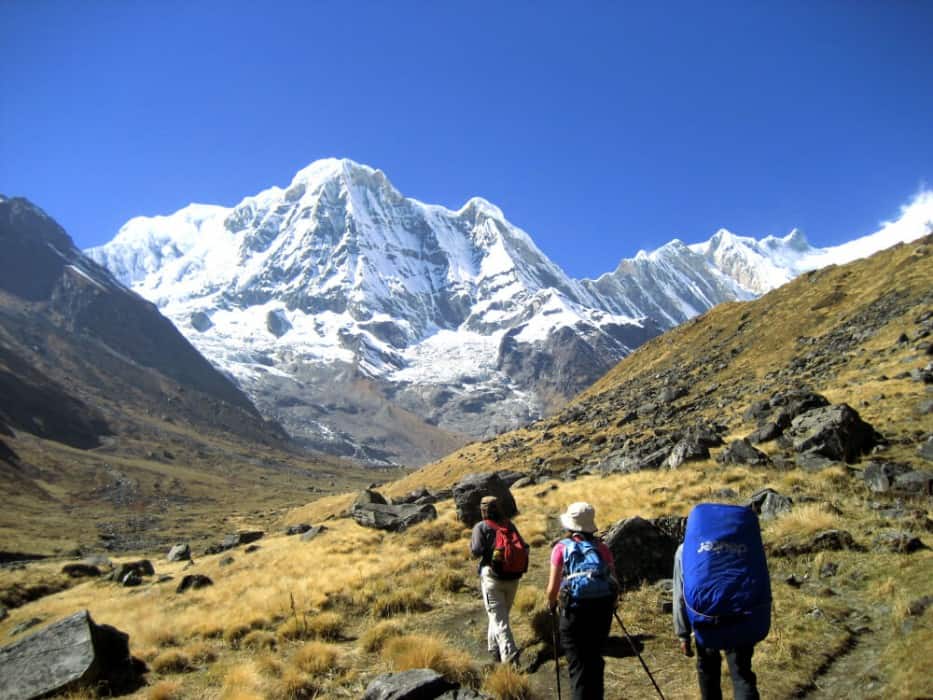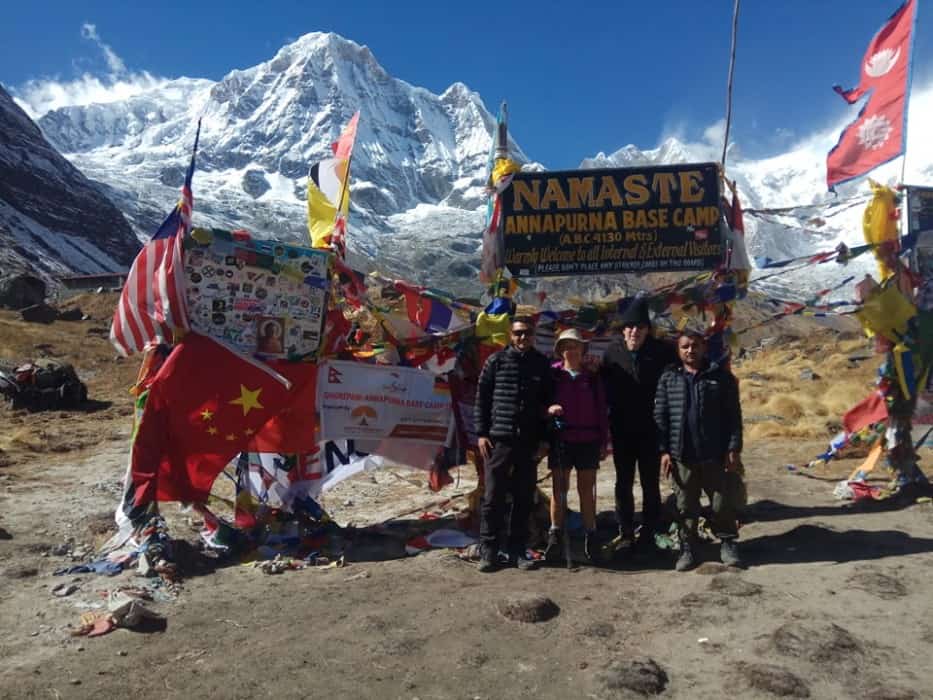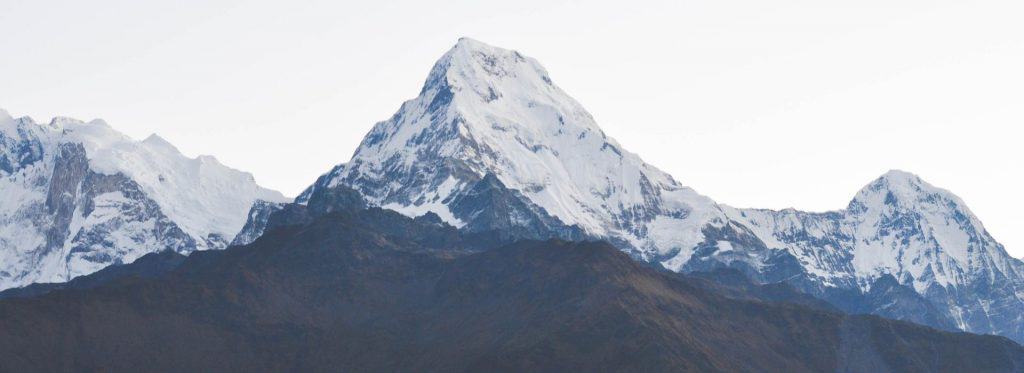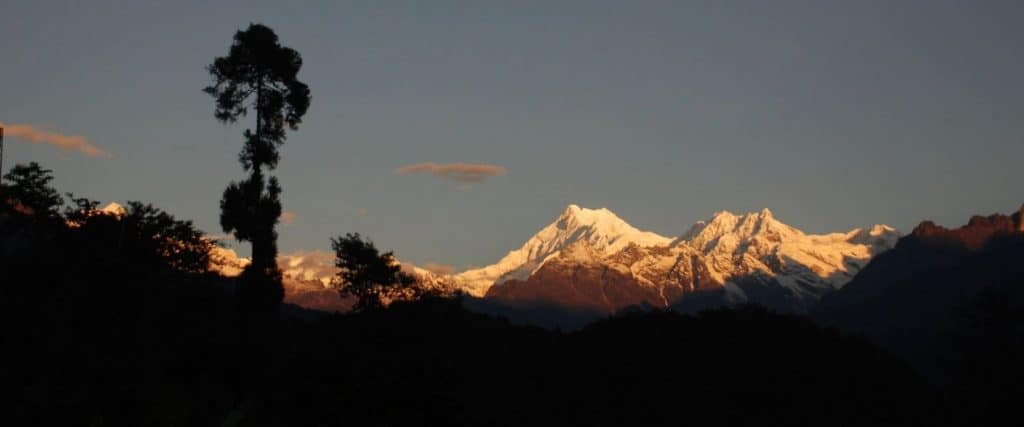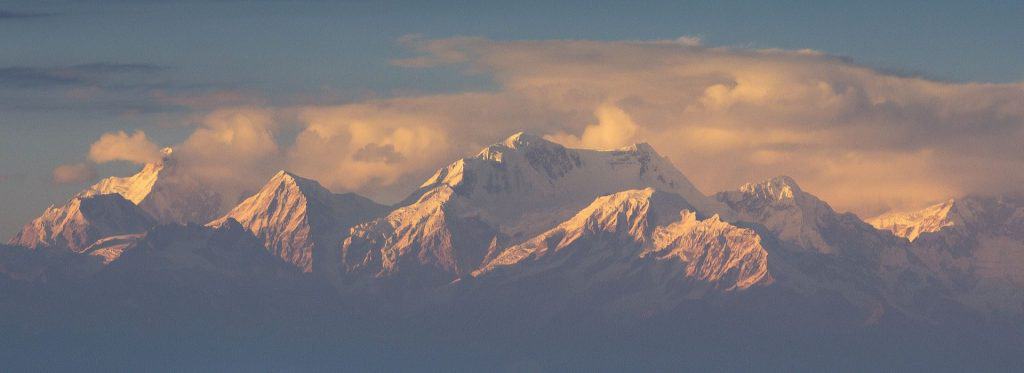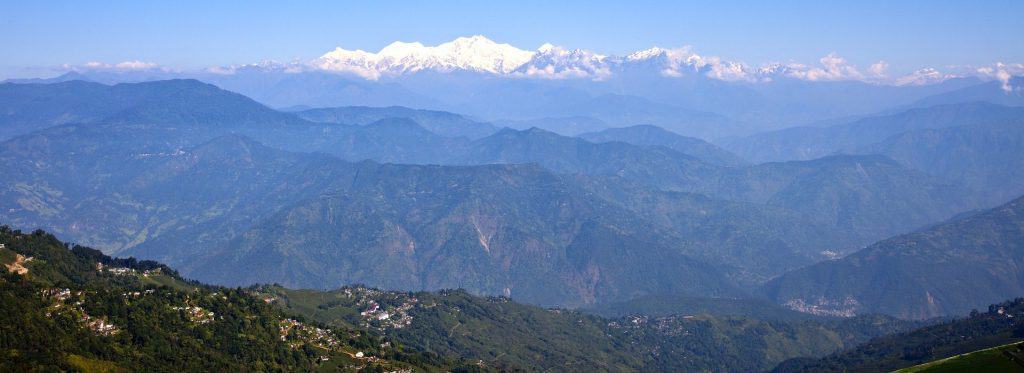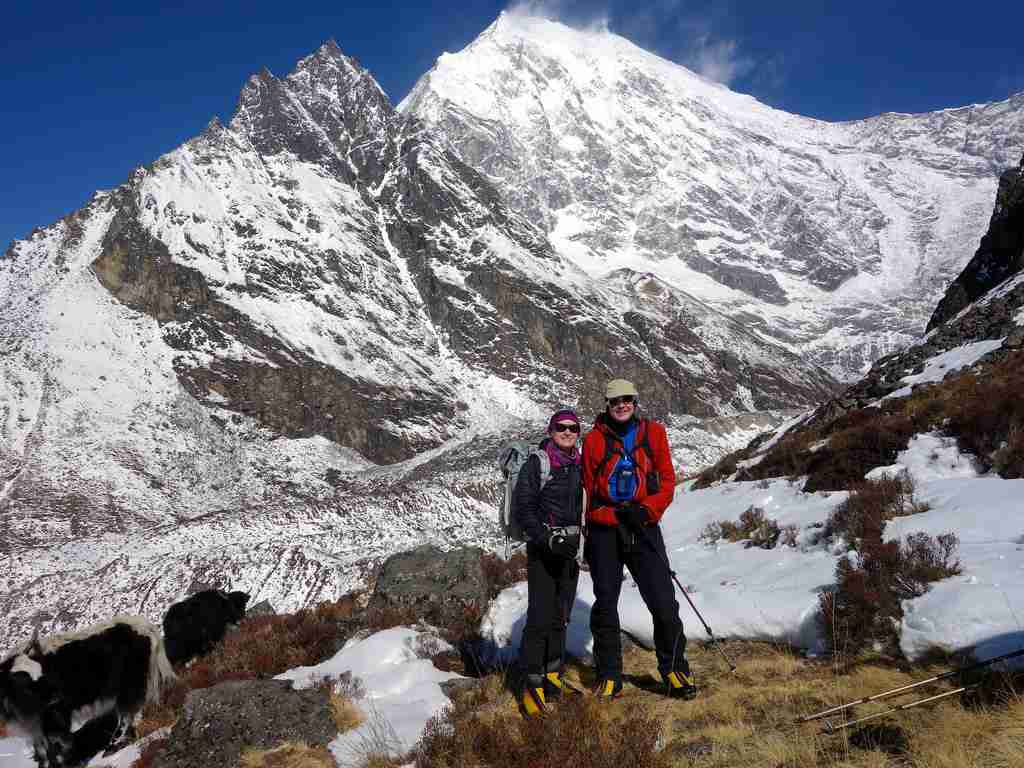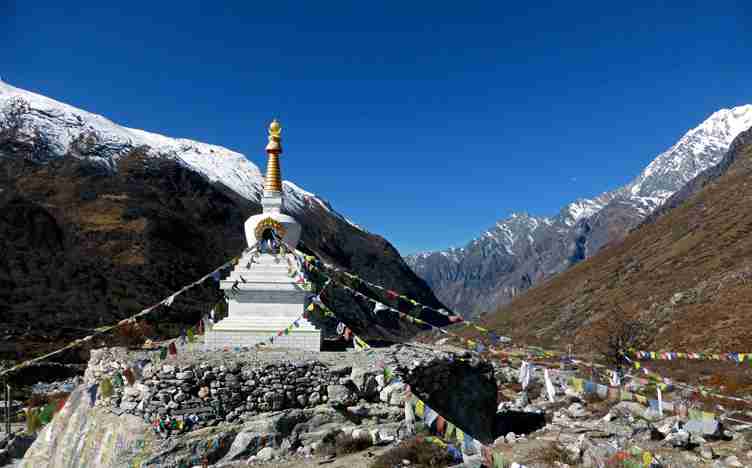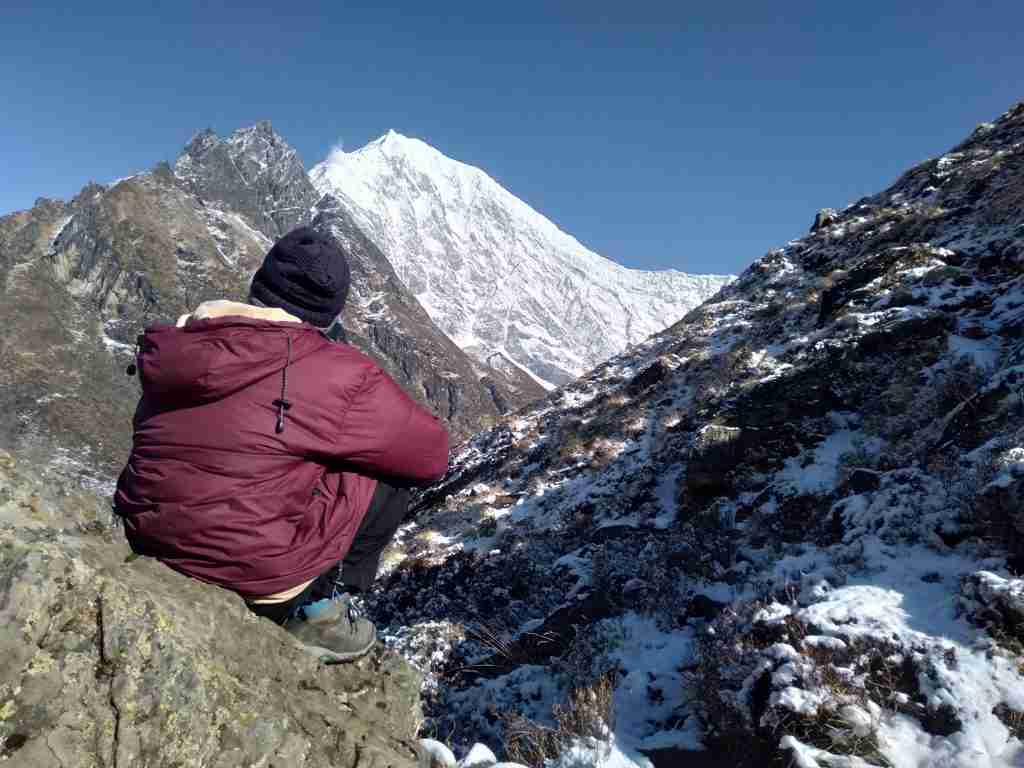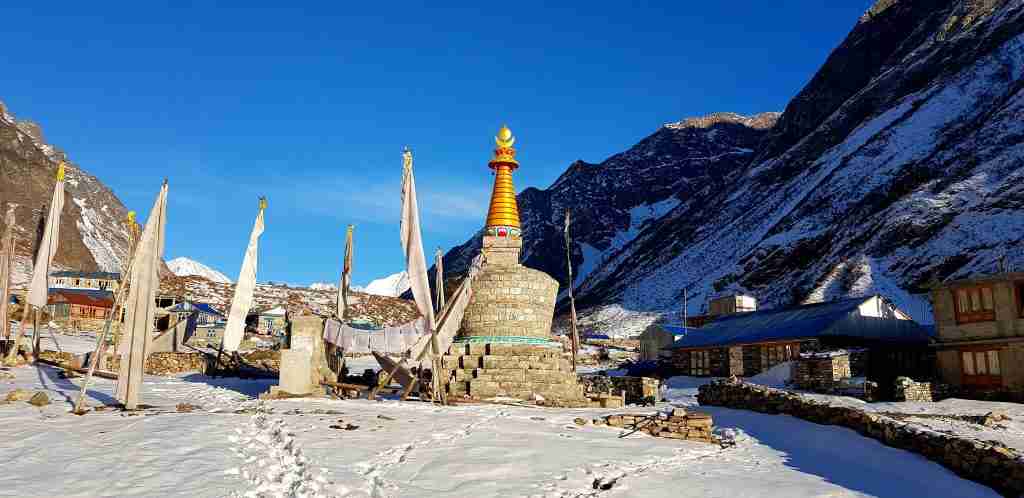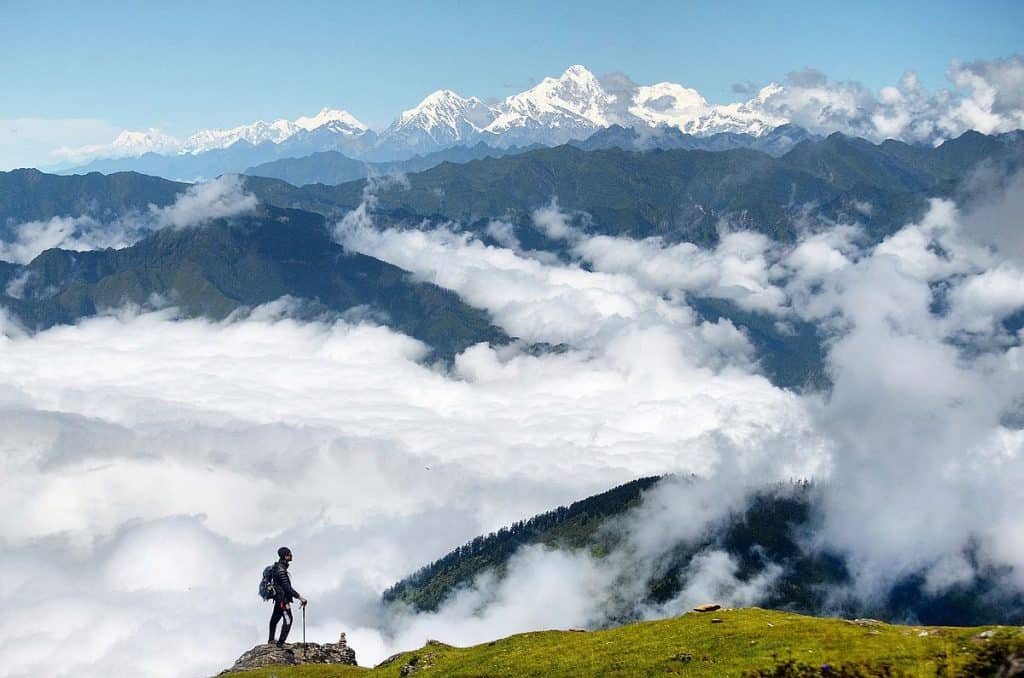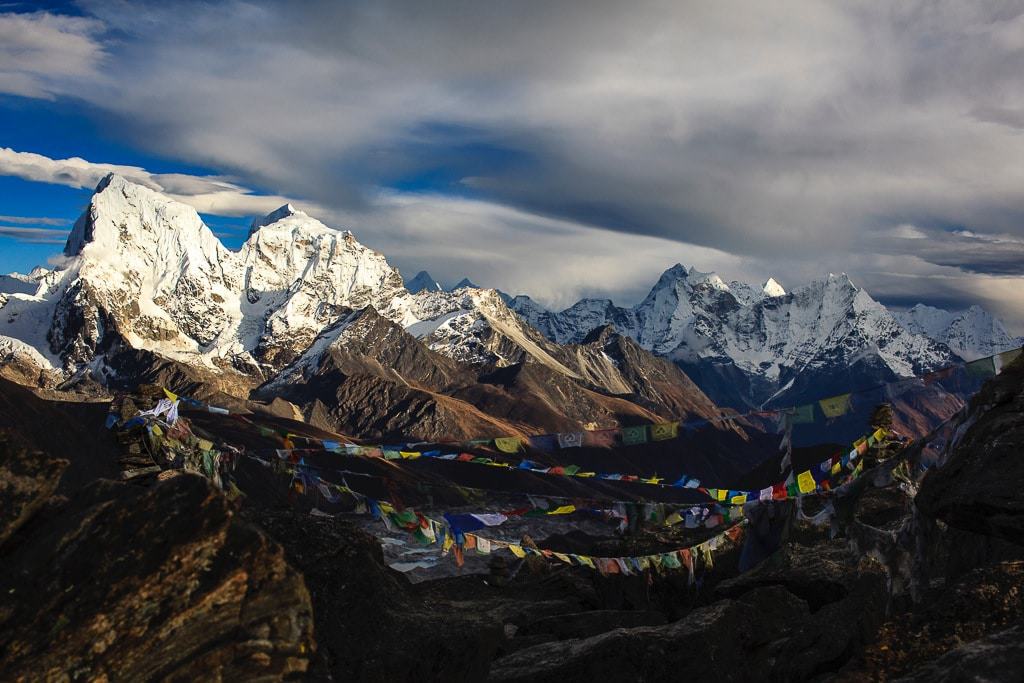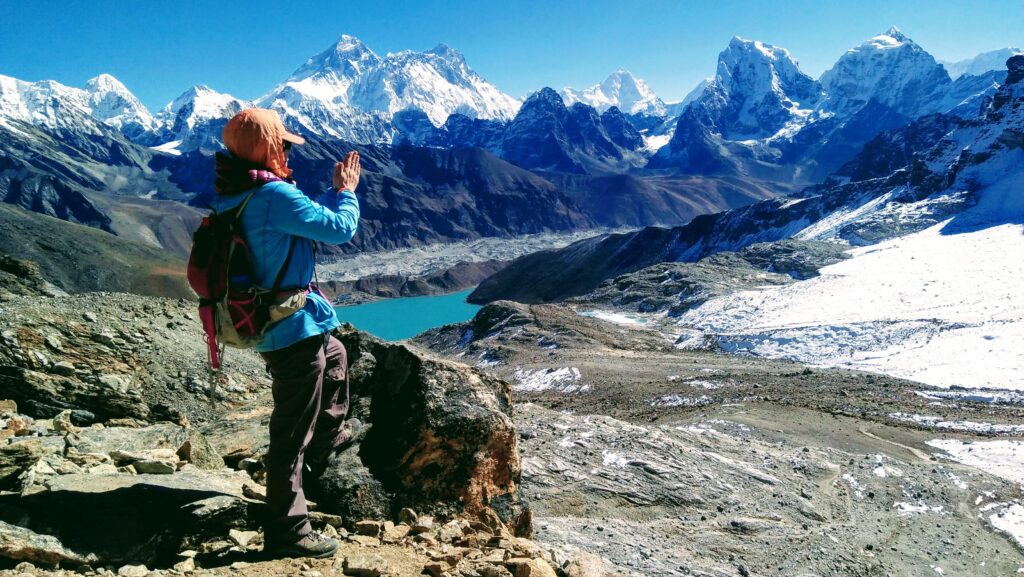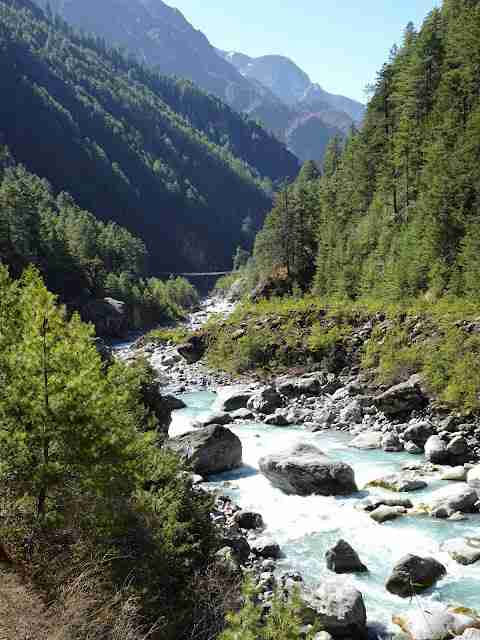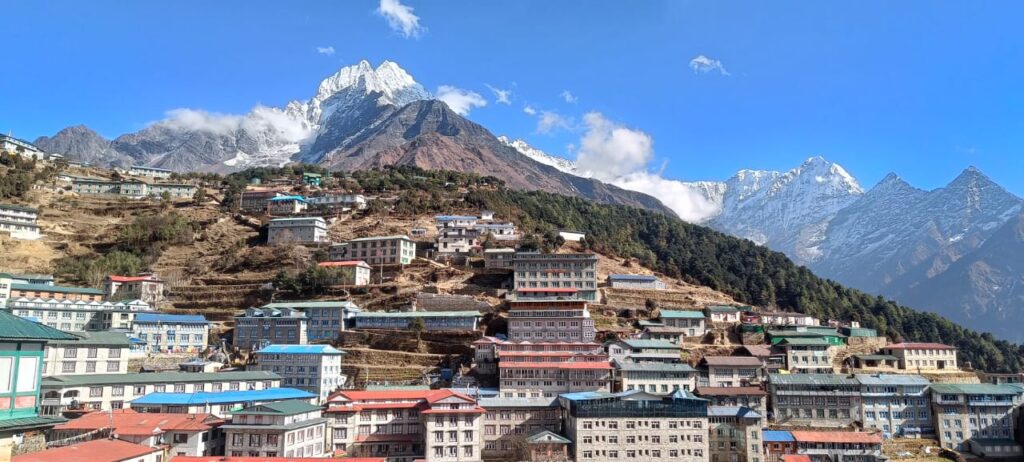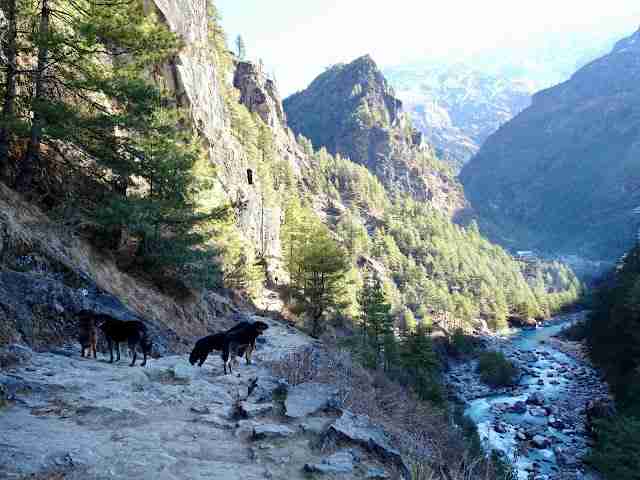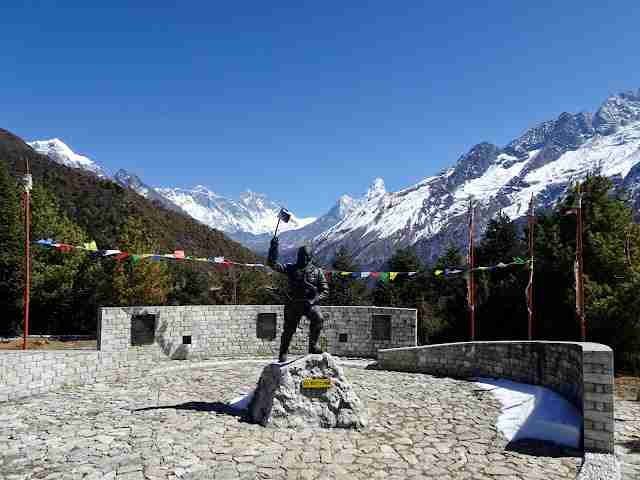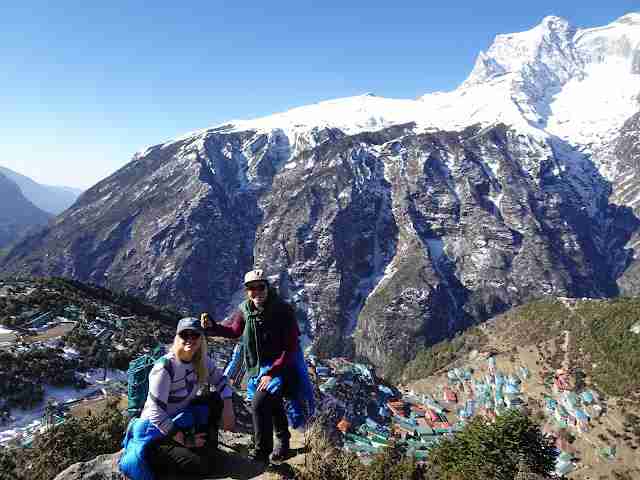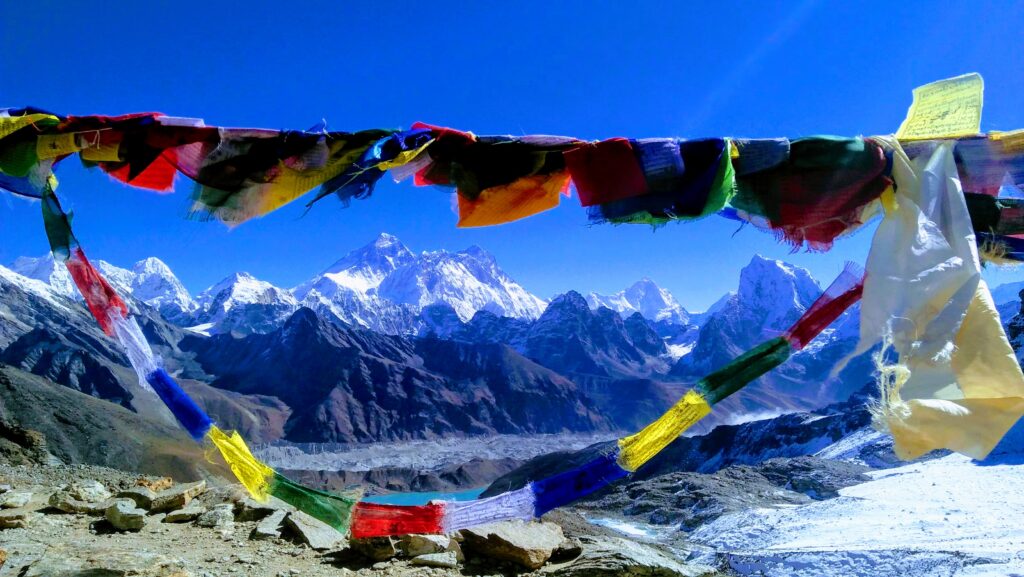-
The Annapurna Base Camp Trek is available year-round, but the best times to do it are during the spring and autumn seasons.
-
4110 meters / 13484 feet at Annapurna Base Camp.
-
8 nights and 9 Days
-
Moderate
-
Private vehicle to starting point and from the ending point.
-
Lakeside, Pokhara.
-
All year round.
-
12 People max
Overview
Annapurna Base Camp Trek, also known as ABC Trek, is a tremendous combination of spectacular mountain vistas, traditional mountain village life and thick rhododendron and bamboo forest ecosystems.
We begin our journey in the picturesque lakeside town of Pokhara and head towards Tikhedhunga, Ghorepani, and beyond, passing through lush forests and farmland, and narrow gorges that are overlooked by the mighty Hiunchuli and Machhapuchhre (Fishtail) mountain.
This route provides an introduction to the Gurung and Magar cultures, with their warm and welcoming personalities.
You will witness local people living a simple life, where Buddhism influences each and every action.
En route to the Annapurna Base Camp Trek, one can spot many species of birds and wildlife happily living in this lush environment, while enjoying breathtaking views of the snow capped mountains of the Annapurna Range.
Our ultimate destination is the Annapurna Base Camp, where we will be encapsulated by a mountainous wonderland and surrounded by the icy peaks of some of the world’s highest and most beautiful mountains.
You cannot help but fall in love with this region and be blown away by its crisp serenity.
Annapurna Base Camp Trek route includes another popular trekking destination, the Poon Hill Trek, providing unparalleled mountain vistas and perfect photo opportunities.
There are certainly some challenging days involved in reaching the altitude of 4130 meters, including rocky trails and an ascent of 3000 stone steps to Ulleri, but the majestic mountains all along the way to Annapurna Base Camp, over an array of different and exciting landscapes, make the effort worthwhile.
To complete ABC trek trek, we stop at Jhinu on the way back to Pokhara, where you can rejuvenate your tired muscles in natural hot springs.
Annapurna Base Camp Trek is an amazing journey into an infamous region of Nepal.
What more could you ask for?
Don’t have 9 days? Try the challenging 5 Days Annapurna Base Camp Trek.
Annapurna Base Camp Trek itinerary
Day 1: Pickup from hotel in Pokhara, an hour drive to Nayapul then trek to Ulleri (2070meters/5.5 hours trek).
Day 2: Ghorepani (2810meters/5 hours trek).
Day 3: Poon Hill (3210meters) and Tadhapani (2700meters / 6 hours total trek).
Day 4: Sinuwa (2310meters/6 hours trek).
Day 5: Deurali (3230meters/ 5 hours trek).
Day 6: Annapurna Base Camp (4110meters / 4 hours trek).
Day 7: Bamboo (2340meters/ 6.5 hours trek).
Day 8: Jhinu (1780meters/ 5.5 hours trek.
Day 9: Trek to Siwai and drive to Pokhara (850meters / 2.5 hours trek and 2.5 hours drive).
Highlights of Annapurna Base Camp Trek
- Enjoy stunning views of the Annapurna Range, including famous peaks like Annapurna, Machhapuchhre (Fishtail) and Hiunchuli, as you trek through different landscapes.
- Experience the rich Gurung and Magar cultures, meeting friendly locals along the way. Witness their traditional way of life influenced by Buddhism, adding depth to your ABC trek journey.
- Walk through lush forests, bamboo groves, farmlands and along rivers, offering variation of scenery throughout your trek.
- Spot various birds and wildlife in their natural habitats as you trek through the lush environment.
- Reach heights of over 4000 meters on your journey to Annapurna Base Camp, surrounded by majestic Himalayan peaks, for a truly magical experience.
- Visit Poon Hill, known for its stunning mountain views and photo opportunities, enhancing your ABC trekking adventure.
Annapurna Base Camp Trek Detailed Itinerary and Altitude Profile
Hours of walking: 5.5.
Difficulty: Moderate to difficult.
Elevation reached: 2070 meters/6790 feet.
Terrain: Gentle inclines, well defined paths, riverbank trails, 3000 steps from Tikhedhunga to Ulleri.
Views on offer: The towering, snow-capped Annapurna range.
Highlights: Tasting the sweet local oranges, walking alongside the Bhurungdi Khola, famous 3000 stairs.
What’s to see: Orange groves and rice fields.
Accommodation: Basic Teahouse.
Hours walking: 5.
Difficulty: Moderate.
Elevation reached: 2810 meters / 9220 feet.
Terrain: Stone staircase, steep inclines.
Views on offer: Machhapuchhre (Fishtail Mountain), Gandharba Chuli and Annapurana II and III.
Highlights: Rhododendron and oak forests, langur monkeys and musk deer.
Accommodation: Basic Teahouse.
Hours of walking: 6.
Difficulty: Moderate to difficult.
Elevation reached: 3210m/10530ft at Poon Hill and 2700/8858ft at Tadhapani.
Terrain: Steep, hilly descents and jungle paths.
Views on offer: Panoramic views of the Annapurna and Dhaulagiri ranges.
Highlights: Reaching the top of Poon Hill for amazing, panoramic views.
What’s to see: The village of Deurali and lots of langur monkeys.
Accommodation: Basic Teahouse.
Hours of walking: 6
Difficulty: Moderate.
Elevation reached: 2310 meters/7580 feet.
Terrain: Steep descents, ascents, forest trails.
Views on offer: Mount Machhapuchhre and Annapurna South.
Highlights: The warm welcome of the Gurung people in the traditional villages.
What’s to see: Farmland and local Gurung villages.
Accommodation: Basic Teahouse.
Hours of walking: 5.
Difficulty: Moderate.
Elevation reached: 3230m/ 10600ft.
Terrain: Steep descents, dirt and forest tracks.
Views on offer: The Annapurna range.
Highlights: Crossing the Chomrong Khola on an impressive suspension bridge.
What’s to see: Rhododendron and walnut trees, wild bamboo.
Accommodation: Basic Teahouse.
Hours of walking: 4.
Difficulty: Moderate to Difficult.
Elevation reached: 4110m / 13485ft.
Terrain: Steep inclines, rocky tracks, there may be snow depending on the time of year.
Views on offer: Once you reach base camp, you will be encapsulated by snowy mountains as far as the eye can see.
Highlights: The Annapurna sanctuary, an area of pristine natural beauty.
What’s to see: The Annapurna Glacier.
Accommodation: Basic Teahouse.
Hours of walking: 6.5.
Difficulty: Moderate.
Elevation reached: 2340m / 7675ft.
Terrain: Steep descents, rocky tracks, forest and riverbank trails.
Views on offer: The Annapurna Range.
Highlights: Watching the sunrise bathe the Annapurna sanctuary before we begin our descent.
What’s to see: The Annapurna glacier and the Modi Khola river as we descend.
Accommodation: Basic Teahouse.
Hours of Walking: 5.5.
Difficulty: Easy to difficult.
Elevation reached: 1780m / 5840ft.
Terrain: A hilly ascent to Sinuwa then well defined tracks, descending to Jhinu.
Views on offer: The River Valley and snow-capped peaks in the distance.
Highlights: Bathing in the natural hot springs at Jhinu.
What’s to see: Chomrong Khola, thick forests, the village of Chomrong and natural hot springs.
Accommodation: Basic Teahouse.
Hours of walking: 2.5 hours. (2.5 hour drive.)
Difficulty: Easy to moderate.
Elevation reached: 1070m at Nayapul and 850m at Pokhara.
Terrain: Gentle descents, riverbank trails.
Views on offer: Distant snow capped peaks and mountains
Highlights: Last day of walking in the Annapurna region, time to relax! Congratulations on completing your trek.
What’s to see: The Modi Khola River, last glimpses of the mountains.
ABC Trek Package Inclusion/Exclusion
The Cost Include(s)
- Pokhara (Lakeside area) to Nayapul transfers.
- An English speaking professional/licensed guide.
- Teahouse accommodation (twin/double and dorm rooms at higher elevation)
- All your standard Meals (breakfast, lunch and dinner) during the trek.
- A Porter (one porter between 2 participants / maximum 20 kilos carried by a porter / 10 kilos from each participants).
- Required trek entry permits.
- Siwai – Nayapul – Pokhara (Lakeside area) transfers.
- Government imposed taxes.
The Cost Exclude(s)
- Personal expenses such as laundry, wi-fi, battery charging, sweets, snacks etc..
- All kind of beverages (tea/coffee, bottled/filter water, coke, etc).
- Travel Insurance (Recommended as you are trekking in remote area / not mandatory to join trek).
- Personal trekking gears and clothing.
- Tipping (expected by guide and porters but not mandatory).
- Any loss arising due to unforeseen circumstances that is beyond Mosaic Adventure control.
Annapurna Base Camp Trek FAQs
On Day 1, start day of the trek we will arrange a pickup service free of charge from your hotel in Pokhara, Lakeside area. We will request your hotel details once you book this trek.
The Annapurna Base Camp trek is considered to be a moderate trekking route in Nepal. It has some long days and steep inclines. You do not require any previous trekking or mountaineering experience. It is not required that you have any technical experience, only that you be in good physical condition and are able to walk for four to six hours per day over hilly terrain with a light bag pack. If you are not an experienced trekker or do not exercise regularly, we recommend that you embark on a training program well in advance of commencing this trip. You will be given plenty of time to rest throughout the trek and the pace will be slow to help you acclimatize safely to the increasing elevation.
On your trek, you will be staying in “Teahouses.” Accommodation is limited, especially the higher you get, so your room may vary from a twin/double room to a bed in a dormitory. Bed mattresses are usually firm, not sprung mattresses that you may be used to at home. The accommodation is very basic and there will usually be shared shower and toilet facilities. There is a communal dining hall in all teahouses offering limited meal choices. Although basic, the teahouses are clean and are a welcome, friendly and warm resting place after a day trekking.
We ask that all our customers bring water purification tablets and a water bottle with them. (They can be bought in Kathmandu/Pokhara if forgotten.) Mosaic supports responsible tourism so we do not encourage trekkers to buy bottled water when in the Himalayan region, although it is be available, there is no proper disposal system for plastic bottles and we would like to keep our mountains clean and trash free. There will be plenty of water available along the way to fill your bottles and most brands of purification tablets take just 30 minutes before you can drink your water. We recommend that you drink a minimum of 3 to 4 liters of water per day whilst on your trek.
Any luggage that you will not require during your trek can be kept securely in your hotel in Pokhara.
Walking poles are not essential but can be useful especially on the way down. Poles help you balance on the way down and take the strain off of your legs (quad muscles) on some of the steep climbs. You can buy poles in Pokhara and they easily collapse so you can attach them to your back pack when they are not needed.
There are plenty of trekking shops in Kathmandu and Pokhara selling equipment inexpensively compared to the prices you would normally pay at home, although, the quality of these products cannot always be guaranteed. If you do not want to take the risk, we recommend you buy major items such as trekking shoes, before you arrive in Nepal. It is also recommended you buy your shoes well in advance of your trek so you can “break them in” and avoid blisters during your trip.
Yes, you can, in the teahouses. Please remember that plugs might be different than at home so don’t forget to bring adapters with you or buy them in Kathmandu before the trip. You may need to pay for the use of the electricity to recharge your electrical items in some teahouses, usually at a cost of $2-3 US per hour.
Showers are available at the teahouses. They will usually be shared bathrooms in most teahouses, especially the higher up you go. You will have to pay for a hot water shower per person. The higher you are, the colder it gets and you may find that you do not want to shower as often so you can wait just a few days until your descent.
Local currency in Nepal is rupees. We recommend you bring US dollars with you to Nepal and exchange them here as this is easily done and is a widely accepted currency. The amount of money you will need on a daily basis depends on your spending habits. A guide would be $10 per day for extra drinks (tea/coffee etc).
You will need to carry a reasonable sized daypack, big enough to carry personal items, water, camera, snacks, sunscreen, hat, a fleece jacket and gloves for higher altitudes. The porters will carry the bigger packs with your clothes etc…. They will carry packs up to 20kg. (10kg per person)
It depends on the nature of the sickness. Usually, if you become sick, you will descend to a lower altitude with the help and support of porter. If you are seriously ill, we will arrange an emergency helicopter evacuation service. Our guide will take immediate action according to the situation. Please ensure you arrange travel insurance that covers you for an evacuation service and trekking at high altitudes.
*Altitude sickness can affect everyone whilst trekking including young and healthy people and is a genuine concern in higher altitudes. If you feel dizzy, suffer palpitations or severe headaches, return immediately to a lower altitude. Do not take altitude sickness lightly. It can be fatal! Please familiarize yourself with the symptoms of altitude sickness before your trek. Do not ignore even the mildest of symptoms, inform your guide immediately. Our guides carry basic medicine and first aid equipment including simple painkillers, altitude sickness tablets, bandages, balm for muscle ache and medication to treat diarrhea and vomiting.
These are the questions we are often asked and we hope that you will find the answers useful. Please don’t hesitate to contact us if you have any further queries.
Annapurna Base Camp Trek Map

-
Great tripBy Andrew Wong March 12, 2024Great trip reaching Annapurna Base Camp with Mosaic Adventure. Our recent trek to Poon Hill and Annapurna Base Camp was wonderful. All staff, Madhav in the office, Ramesh on the trek and both porters, were amazing and very helpful. Weather was good, with beautiful views and the whole arrangement was great. We will definitely come back again for another trek with Mosaic Adventure.
-
Unforgettable Trek to ABCBy Qonitah Yunita January 19, 2024It is my first ever trekking trip and the ABC route is challenging yet stunning. We started our tour in late December with slightly cold temperature and snowy up at the base camp. The trek offered beautiful views along the way as well as at the top. The view is absolutely breathtaking, and I recommend everyone to visit it at least once in a lifetime. Nonetheless, we are happy to have Purna as our guide, who is cheerful, friendly and experienced. The itinerary, accommodations and food are all well arranged. Truly an amazing lifetime experience! Will surely come back! After doing it, honestly, it makes me want to explore more treks in Nepal. On a side note, remember to train yourself a bit before the trip to enjoy it more. :)
-
Well Organized TrekBy Anne Ragnhild November 15, 2023During our Annapurna Base Camp trek, my friends and I enjoyed 9 wonderful days with Buddha. We experienced breathtaking views, memorable days and fantastic adventures. Trekking with Buddha was truly delightful. Their supply of warm sleeping bags and jackets was incredibly helpful, sparing us the need to carry them to Nepal. Mosaic Adventure offered these gears at no extra cost. Overall, it was a superb experience. Don't hesitate to go for this trek, you will have lots of fun. Thank you!
-
Amazing trek - worth the hard workBy Eugenia Stefanska March 6, 2023We chose Mosaic Adventure for our trek to Annapurna Base Camp based on their TripAdvisor reviews and they didn't disappoint us. We cannot rate the team highly enough. Madhav was very helpful while booking the trek and Pralhad on the trail was superb with his amazing experience and skill. He took good care of us, providing all logistical management and attending to us when we experienced some mild sickness. This ABC trek itinerary can be categorized as a beginners trek, but it can be difficult for some people, so make sure you are well trained and every effort you make is worth the trip. Do not hesitate to book with them and don't forget to ask for Pralhad to be your guide.
-
Magical Annapurna Base Camp TrekBy Teresa Robertson February 13, 2022Few months ago, we booked the Annapurna Base Camp Trek through Mosaic Adventure for our family. We were looking for an experience that was not as intense as the Everest Trek because of the children in our family but provided the same amount of fun. The complete trek to Annapurna Base Camp was magical. We especially enjoyed the stop at Chhomrong Village where we indulged in some amazing chocolate cake and interacted with the friendliest locals. During this trek we also had the opportunity to truly indulge in the unique Magar traditions. Not to forget to mention the breathtaking views of the Himalayas that definitely stole the show. Overall, it was a perfect trip for the entire family thanks to Mosaic Adventure including our wonderful guide Rudra.
-
Extremely memorableBy Chris O'Donnell June 5, 2019My girlfriend and I booked a trek to Annapurna Base Camp, including a Kathmandu city day tour, with Mosaic Adventure at the end of May. We weren't sure about the best destination due to the oncoming of monsoon season. Raj (owner of Mosaic Adventure) sat down with us, helped to plan our itinerary, suggested the best route for the weather and time of year. We really felt he had our best interest in mind. The price was not the cheapest but we got the best value for our money. Included in the price was down sleeping bags and jackets. Most of all, we had the best possible guide. Krishna is a very experienced guide, and a wealth of knowledge. He was attentive to our needs, and we were very comfortable spending time together; he made our trip extremely memorable. We even got private Nepalese lessons. Thank you Mosaic for making our trek to ABC, an experience we will never forget.
-
Highly recommend to anyone looking to organize treks and city tours in NepalBy Andrea Silberman May 16, 2019My partner and I highly recommend Mosaic Adventure to anyone looking to organise treks and city tours in Nepal. We emailed them ahead of our holiday and were extremely pleased by how helpful Madhav was in suggesting different options for our tour. You should just email Mosaic to find out about all the amazing services they offer! We trekked to Annapurna base camp, which featured some incredible scenery - the sunrise at Poon Hill, blooming rhododendron, huge bambsoo forests, lovely Gurung villages, the Annapurna sanctuary, hot springs in Jhinu and much, much more. Our group consisted of 4 tourists, 1 guide and 2 porters and we all got on really well, playing cards together after trekking and talking about our different home countries. Our guide and porters were very flexible which allowed us to each walk at our own pace and to adapt the itinerary when needed. We think it is much better to have a guide and porters in Nepal as we learned so much about Nepali culture from them. They always arranged for us to get the best rooms in the lodges and made sure we would get good food after trekking. It is also much safer as they know all the routes and know where there is danger of avalanches coming down. It was really not much more expensive than doing it all yourself, but so much more enjoyable. Back in Kathmandu we enjoyed a day city-tour organised by Mosaic which was also excellent. The guide was very knowledgeable about all the sites we visited and we were able to visit many more sites in one day than we would have been able to on our own. We visited Pashupatinath, Bhakthapur as well as Bodnath stupa, which are all must-sees if you are in the area. Thanks, Madhav, for helping us in having such a great holiday in Nepal!
-
 100 percent professionalBy Xavier Obach November 11, 2017Mosaic Adventure is a superb travel agency. We recommend it without a doubt and it's human team deserves your confidence. It's manager, Madhav, and the two guides we worked with, Probin and Pralhad are 100% professionals able to deal with costumer needs and the with "tricky" task of moving around in the Nepal trekking universe. Probably you don't know really a person (or a company) till you have to deal with difficulties and challenges. Our trek to the Annapurna Base Camp on October 2017 had both. We were unable to reach our goal due to an exceptional amount of trekkers that literally fulfilled all available beds in the final stages of the route (even on out of room spaces). We have lots of complains about the Nepal park organisation and the booking system itself but We can only recognize the superb job the guides and Mosaic did to solve the problem. We have to say that, fortunately, we had spare days enough in Nepal to open a new window opportunity but that opportunity was possible only with the determination of Mosaic to solve the problem and take responsibility of us. We had the chance of talk with other trekkers and analyse the work of other guides and our conclusion is that Probin and Pralhad are in the top of the list, with plenty of experience on these routes and leadership skills to deal with group behaviour (not an easy thing). The Mosaic policy about porters (10kg max per person / 2 bags per porter) can restrain a bit the costumer comfort but is far more human and reasonable than others we saw on our route and it's something all trekkers should ask before decide. About the routes: Any person going to ABC trek must know that there is serious problem up there and that the Nepal park organisation is not assuming its responsibility (on hi-season at least). We recommend the panoramic Annapurna trek (till Poon Hill) and We also recommend the Everest panoramic trek (till Tengboche). Both are astonishing walks on incredible landscapes admiring the top of the world in front of you. I should repeat both and we are considering new trips to Nepal as soon as we can.
100 percent professionalBy Xavier Obach November 11, 2017Mosaic Adventure is a superb travel agency. We recommend it without a doubt and it's human team deserves your confidence. It's manager, Madhav, and the two guides we worked with, Probin and Pralhad are 100% professionals able to deal with costumer needs and the with "tricky" task of moving around in the Nepal trekking universe. Probably you don't know really a person (or a company) till you have to deal with difficulties and challenges. Our trek to the Annapurna Base Camp on October 2017 had both. We were unable to reach our goal due to an exceptional amount of trekkers that literally fulfilled all available beds in the final stages of the route (even on out of room spaces). We have lots of complains about the Nepal park organisation and the booking system itself but We can only recognize the superb job the guides and Mosaic did to solve the problem. We have to say that, fortunately, we had spare days enough in Nepal to open a new window opportunity but that opportunity was possible only with the determination of Mosaic to solve the problem and take responsibility of us. We had the chance of talk with other trekkers and analyse the work of other guides and our conclusion is that Probin and Pralhad are in the top of the list, with plenty of experience on these routes and leadership skills to deal with group behaviour (not an easy thing). The Mosaic policy about porters (10kg max per person / 2 bags per porter) can restrain a bit the costumer comfort but is far more human and reasonable than others we saw on our route and it's something all trekkers should ask before decide. About the routes: Any person going to ABC trek must know that there is serious problem up there and that the Nepal park organisation is not assuming its responsibility (on hi-season at least). We recommend the panoramic Annapurna trek (till Poon Hill) and We also recommend the Everest panoramic trek (till Tengboche). Both are astonishing walks on incredible landscapes admiring the top of the world in front of you. I should repeat both and we are considering new trips to Nepal as soon as we can. -
 Truly awe-inspiringBy Adam Parker April 4, 2015My partner and I highly recommend Mosaic Adventure to anyone looking to trek in Nepal. We emailed them ahead of our trip and were extremely pleased by how helpful Madhav was in planning our itinerary. You should just email Mosaic to find out about the amazing services they offer! Our trek to Annapurna base camp was truly awe-inspiring and we hugely enjoyed all aspects of it - the sunrise at Poon Hill, the blooming rhododendron, huge bamboo forests, lovely Gurung villages, the Annapurna sanctuary, the hot springs in Jhinu and so much more! Our group consisted of 4 tourists, 1 guide and 2 porters and we all got on really well, playing cards together after trekking and talking about our different home countries. Our guide and porters were very flexible which allowed us to each walk at our own pace and to adapt the itinerary when needed. We think it is much bettet to have a guide and porters in Nepal as we learned so much about Nepali culture from them. They always arranged for us to get the best rooms in the lodges and made sure we would get good food after trekking. It is also much safer as they know all the routes and know where there is danger of avalanches coming down. Finally, it was not much more expensive than doing it all yourself, but so much more enjoyable. Thanks again to Madhav, Rudra, Sushil and Purna for an unforgettable experience!!
Truly awe-inspiringBy Adam Parker April 4, 2015My partner and I highly recommend Mosaic Adventure to anyone looking to trek in Nepal. We emailed them ahead of our trip and were extremely pleased by how helpful Madhav was in planning our itinerary. You should just email Mosaic to find out about the amazing services they offer! Our trek to Annapurna base camp was truly awe-inspiring and we hugely enjoyed all aspects of it - the sunrise at Poon Hill, the blooming rhododendron, huge bamboo forests, lovely Gurung villages, the Annapurna sanctuary, the hot springs in Jhinu and so much more! Our group consisted of 4 tourists, 1 guide and 2 porters and we all got on really well, playing cards together after trekking and talking about our different home countries. Our guide and porters were very flexible which allowed us to each walk at our own pace and to adapt the itinerary when needed. We think it is much bettet to have a guide and porters in Nepal as we learned so much about Nepali culture from them. They always arranged for us to get the best rooms in the lodges and made sure we would get good food after trekking. It is also much safer as they know all the routes and know where there is danger of avalanches coming down. Finally, it was not much more expensive than doing it all yourself, but so much more enjoyable. Thanks again to Madhav, Rudra, Sushil and Purna for an unforgettable experience!! -
 Comfortable, interesting and unforgettable Nepal stayBy Pavel Vizilter October 10, 2014It was our first visit to Nepal. We didn't have detailed plan of our journey and the only thing we new - we want to see Everest. After reading of several reports we decided to buy fly tickets and to book the hotel for two days in Kathmandu. Trough the book service i booked Great Wall. My choice was accidantal. I just wanted to secure our staying in Kathmandu for the short time and in case we wouldn't like the hotel we were ready to change it. The first pleasant surprise was when i received the e-mail from Madhav offering the pick up service from the airport. Later i understood how important was it. The hotel locates in Tamel - district in Kathmandu, actually it's old part, close to Freek Street and to many of historical objects. There are no exact addresses and we had the problems with taxi drivers in finding the right way to the hotel. Anyway Madhav send the car to the airport and we were successfully driven to the hotel. As we understood the hotel is under management of Mosaic Adventure. This circumstance was very helpful for us. So Mosaic arranged our trekking to Everest inside of an hour: all permissions, fly tickets to Lukla, guide, porters, equipment, accommodation, transfers and so on. Unfortunately we had bad luck and on the day when we had to fly Lukla was closed due to bad wetter. We were short of time and decided to rearrange our rout and instead of Everest to go to Annapurna. Many thanks to Madhav - he re-booked and rearranged everything very fast and next day we landed in Pockara and started our trekking to Pon Hill. Now after the trekking I'm sure it was the right decision and only the highest professionalism of Mosaic and especially of Madhav helped us to spend the great time in Nepal. Every country is introduced by the people and such guys like those who are working with Mosaic adventures make Nepal very attractive for visiting and traveling. Herewith i would like to express my personal gratitude to Madhav and very friendly stuff from the hotel Great Wall. They did everything to make our staying in Nepal comfortable, interesting and unforgettable.
Comfortable, interesting and unforgettable Nepal stayBy Pavel Vizilter October 10, 2014It was our first visit to Nepal. We didn't have detailed plan of our journey and the only thing we new - we want to see Everest. After reading of several reports we decided to buy fly tickets and to book the hotel for two days in Kathmandu. Trough the book service i booked Great Wall. My choice was accidantal. I just wanted to secure our staying in Kathmandu for the short time and in case we wouldn't like the hotel we were ready to change it. The first pleasant surprise was when i received the e-mail from Madhav offering the pick up service from the airport. Later i understood how important was it. The hotel locates in Tamel - district in Kathmandu, actually it's old part, close to Freek Street and to many of historical objects. There are no exact addresses and we had the problems with taxi drivers in finding the right way to the hotel. Anyway Madhav send the car to the airport and we were successfully driven to the hotel. As we understood the hotel is under management of Mosaic Adventure. This circumstance was very helpful for us. So Mosaic arranged our trekking to Everest inside of an hour: all permissions, fly tickets to Lukla, guide, porters, equipment, accommodation, transfers and so on. Unfortunately we had bad luck and on the day when we had to fly Lukla was closed due to bad wetter. We were short of time and decided to rearrange our rout and instead of Everest to go to Annapurna. Many thanks to Madhav - he re-booked and rearranged everything very fast and next day we landed in Pockara and started our trekking to Pon Hill. Now after the trekking I'm sure it was the right decision and only the highest professionalism of Mosaic and especially of Madhav helped us to spend the great time in Nepal. Every country is introduced by the people and such guys like those who are working with Mosaic adventures make Nepal very attractive for visiting and traveling. Herewith i would like to express my personal gratitude to Madhav and very friendly stuff from the hotel Great Wall. They did everything to make our staying in Nepal comfortable, interesting and unforgettable. -
 Really enjoyed our trekking in NepalBy Danida October 10, 2014We really enjoyed our trekking in Nepal to the Annapurna Base Camp. Everything was well organized and we felt comfortable every single day. Our guide was very friendly and experienced..Simply the best!!! We would like to thank Mosaic Adventures for the great time...and hopefully we will have the chance to trek to EBC next time. Greetings from the 2 Swiss girls.
Really enjoyed our trekking in NepalBy Danida October 10, 2014We really enjoyed our trekking in Nepal to the Annapurna Base Camp. Everything was well organized and we felt comfortable every single day. Our guide was very friendly and experienced..Simply the best!!! We would like to thank Mosaic Adventures for the great time...and hopefully we will have the chance to trek to EBC next time. Greetings from the 2 Swiss girls. -
 Well taken careBy Esther Lojo August 8, 2009I did the Annapurna Base Camp Trek. Everything was as promised and well taken care off. I truly recommend Mosaic Adventure if you’d like to get family treatment and a fair price. Our guide Raj was a great instructor to Nepali life, what else could you ask for. Please don’t miss the opportunity to enjoy Nepal with the services offered by Mosaic! If you have further questions please don’t hesitate to contact me @ [email protected].
Well taken careBy Esther Lojo August 8, 2009I did the Annapurna Base Camp Trek. Everything was as promised and well taken care off. I truly recommend Mosaic Adventure if you’d like to get family treatment and a fair price. Our guide Raj was a great instructor to Nepali life, what else could you ask for. Please don’t miss the opportunity to enjoy Nepal with the services offered by Mosaic! If you have further questions please don’t hesitate to contact me @ [email protected].
Write a Review Cancel reply
Thank you. Your review will appear after admin approves it.
Please fill all the fields.


